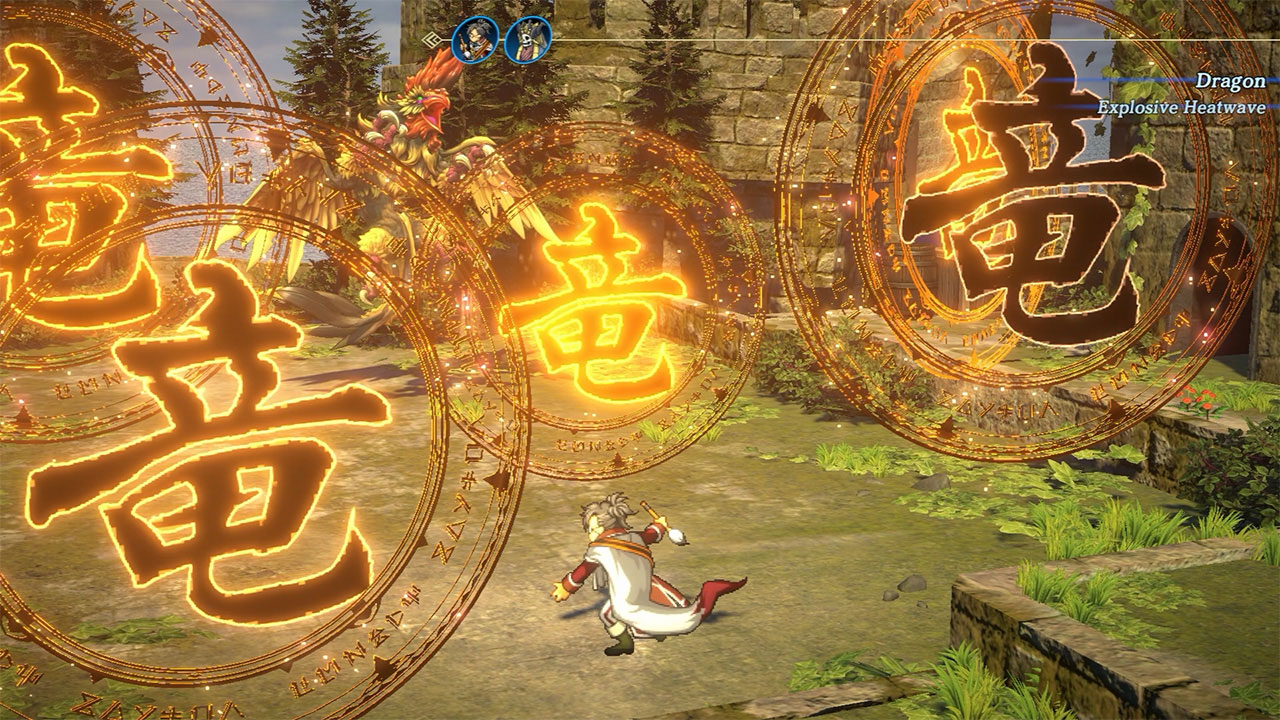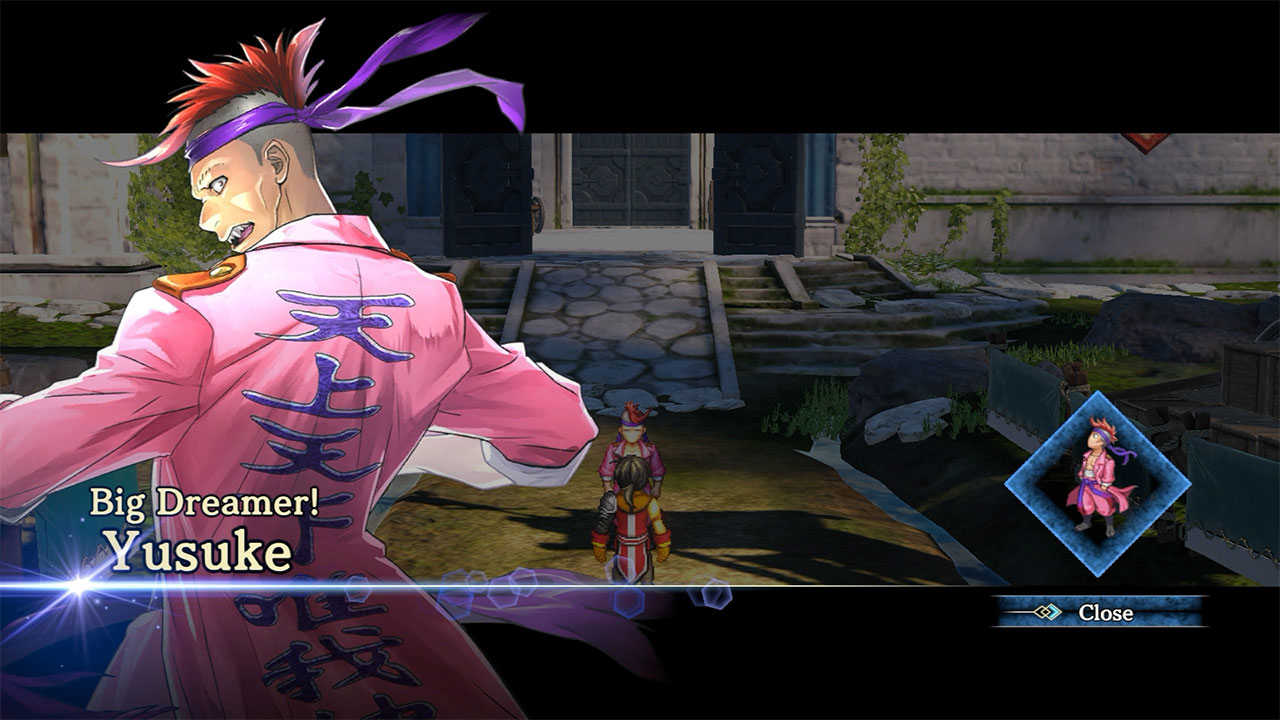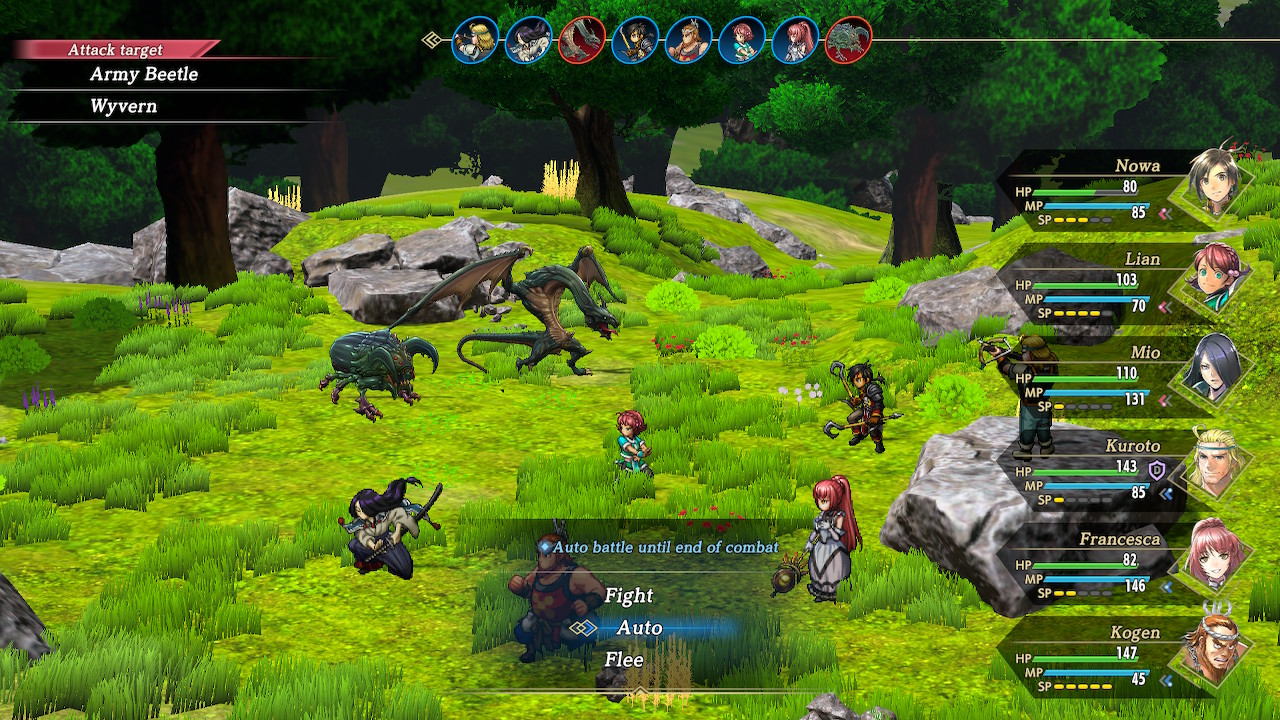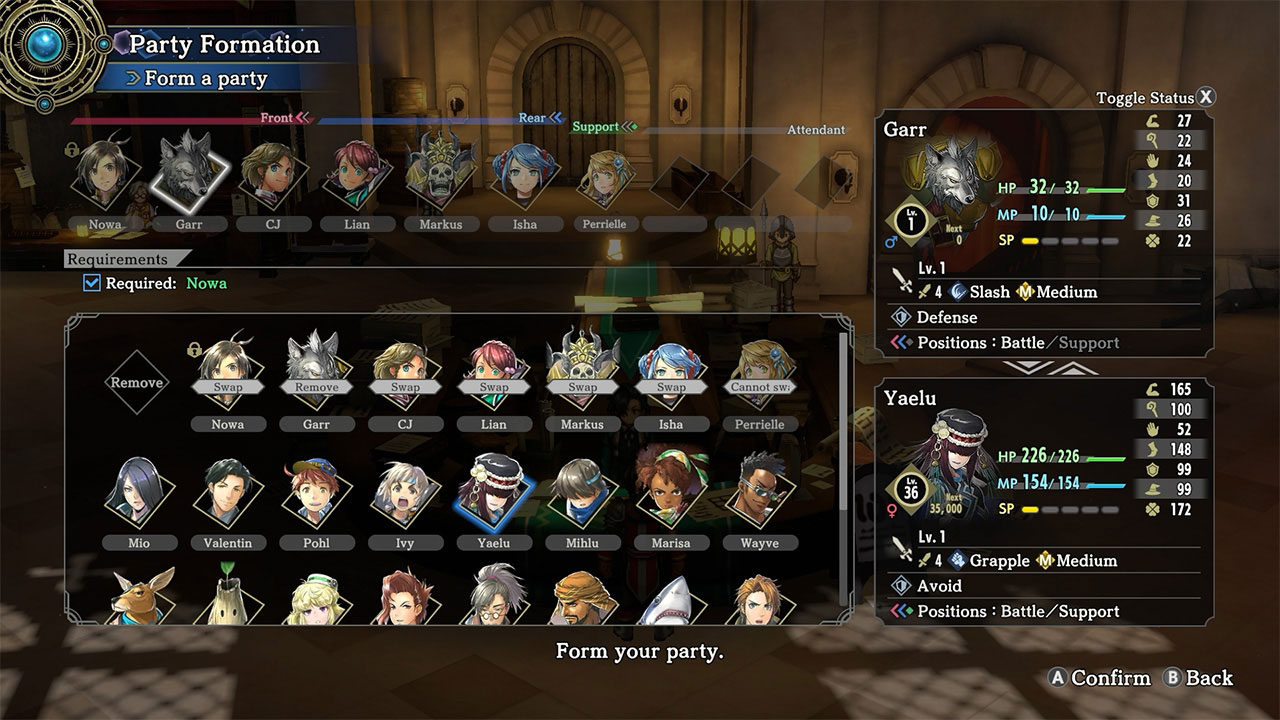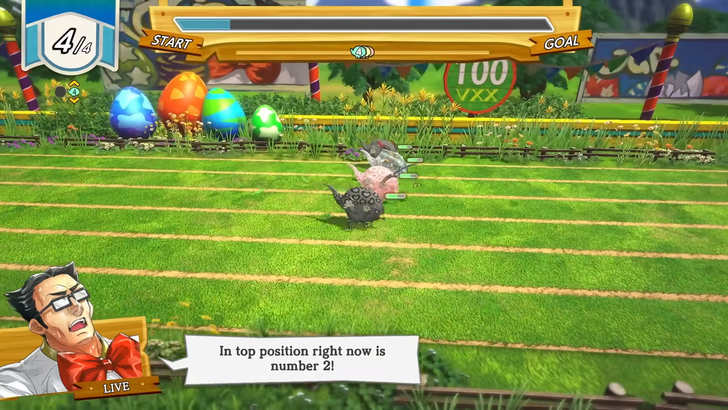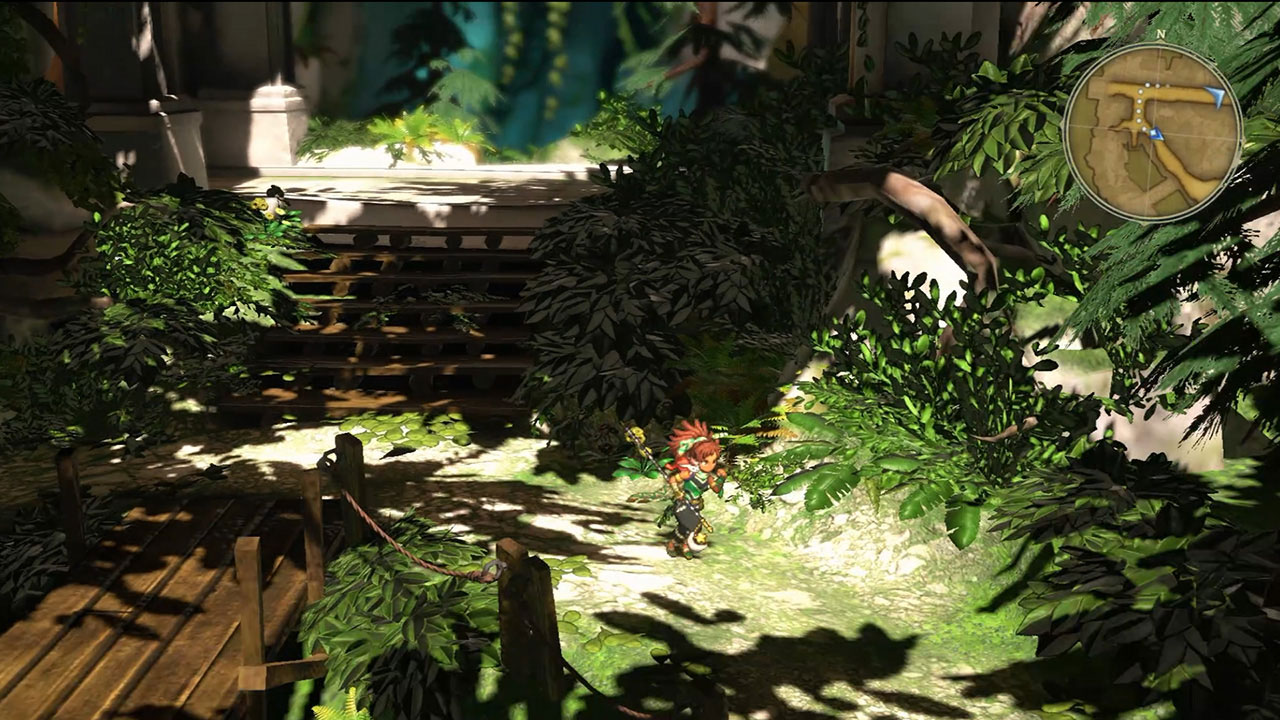You can stop holding out now.
My review of Eiyuden Chronicle: Hundred Heroes is quite late, but that’s partially by design. Initial reviews of the Switch version complained of performance issues that 505 Games promised to fix with a forthcoming update, and we gave them some time to do so. That patch is now out. Did it do the trick?
Short answer? I don’t think so. Ultimate result? I still like the game.
Eiyuden Chronicle: Hundred Heroes is a Kickstarter-funded JRPG that specifically targets those who fondly recall the Suikoden games. I’m not in that group, I guess, having only played Suikoden Tierkreis on the Nintendo DS. I recall just enough about that game to have been quickly comfortable with the approach Rabbit & Bear took with the systems and story of Eiyuden Chronicle.
Our story follows…well, it follows quite a few people, actually. Hundred heroes, don’t you know. But the main story is centered around Nowa, a young soldier with a knack for combat and leadership. He meets and befriends an equally gifted soldier, Seign, but the two quickly find themselves on opposite ends of a conflict that could tear apart not only their friendship, but the entirety of Allraan.
Nowa is tasked with leading a small group of like-minded soldiers in an effort to recruit more to their resistance effort. Allegiances will come and go as he progresses, and there’s just enough mystery/suspense to keep the player guessing throughout. There are a lot of characters to locate and recruit. Some are picked up via the story, some join after completing various sidequests or mini-games.
Others are easily missable. If you gotta catch ’em all, grab a walkthrough.
The turn-based combat system does a good job of letting you try out a lot of these characters at once. Your party contains six active fighters—three in the front, three in the back. Obviously, the frontline is for those with solid defense and short range attacks, while the backline is reserved for healers and those who can attack from a distance. You’ll assign actions for all six characters at the start of each turn, then watch them execute those actions in order of individual speed. The speed of the enemy can disrupt those attacks, but I found it wasn’t too hard to get out of most battles with minimal damage to my team.
Eiyuden Chronicle isn’t terribly difficult…until it wants to be. Some boss battles will find you considerably under-leveled, and you know what that means.
There are plenty of intricacies to the combat, such as the timing of combo attacks and the utilization of “gimmicks” that appear in certain battles. Character abilities can be enhanced with the right weapons and accessories. This all adds some life to an otherwise fairly basic battle system that can start to feel quite repetitious. More on that in a bit.
In addition to the six active combatants, you can assign support characters that provides a buff to the team. More importantly, you can place “attendant” characters. This allows you to keep story-required characters in the party without actually using them, a wonderful option if you want to level up other team members or are just bored with the main group.
This being an old-school JRPG, Eiyuden Chronicle is filled with random battles. Whether you’re exploring a dungeon or traversing the world map, battles happen without warning. If you’re not OK with that, turn away now. You can auto-battle if you like, for which you can customize how each party member approaches combat to make sure they don’t waste skills that aren’t needed against lesser enemies. You’ll definitely want to do all of this, as manually controlling each battle quickly gets tedious.
Actually, tedium is one of the game’s biggest faults. This manifests via repetitious battles, uninspired dungeons, and too much backtracking. You’ll frequently revisit the same areas, especially if you’re interested in completing side quests or unlocking more heroes. The ability to warp to specific dungeon locales would help, right? Well, you need to recruit the character that provides that ability. Want to rearrange your party without having to backtrack to a friendly village? Again, find and recruit the right person. It’s a joyous occasion when these abilities are provided, but they come well after the experience has already been soured.
I’ll also never understand the point of giving us a map without labeling the items on that map. Did I not meet/recruit a character who would provide that basic function? Or give me a quest marker? Anything to prevent me from meandering across the world map when a straight line already provides more random battles than I desire? Not even the JRPG-mandated fishing component can save the day here, as fishing is literally just a matter of tapping the A button.
The occasional minigame pops up, perhaps to spare players from this repetition and occasional aimlessness. Some are fun, some less so, but they all do a good job of reclaiming your attention.
They don’t, however, compensate for the performance problems on the Switch. The promised patch didn’t do much to help, either. The biggest remaining culprit is that everything seems to have a load time. These aren’t terribly long, but the game pauses for a few seconds before and after every battle. When you’re entering and leaving villages. When you’re entering and leaving houses. When you’re entering and leaving shop menus. The interruptions are constant, and they haven’t been addressed at the time of this writing.
As I said at the beginning of the review, however, I still liked Eiyuden Chronicle: Hundred Heroes. This is mostly because of the script. The vast majority of the characters are fun, providing snappy and genuinely humorous dialogue. That’s quite an achievement, considering how many characters there are. It’s not surprising, though, as the characters and writing were also the highlights of the game’s predecessor: Eiyuden Chronicle: Rising. The plot will keep you guessing, and it’s interesting enough to push you forward throughout…and perhaps beyond; Season Pass buyers will get more chapters centered around different characters.
Also, finding/recruiting new heroes is compelling, as is tinkering with your party lineup. Those who love the minutiae of party management will enjoy working through the countless optimization options available.
That leaves us with a game that trips along the way to its destination, but it gets there with nothing more than few bruises and skinned knees. It also takes a trail that hasn’t been open to JRPG fans in quite some time, and that alone may make it worth the hike.
Review: Eiyuden Chronicle: Hundred Heroes (Nintendo Switch)
Fair
Eiyuden Chronicle: Hundred Heroes is a good game. Although billed as a spiritual successor to the Suikoden games, you don’t need to have played them to enjoy this JRPG adventure. You do need some patience, however, as performance issues and its “traditional” ways continue to trip up the Switch version.

